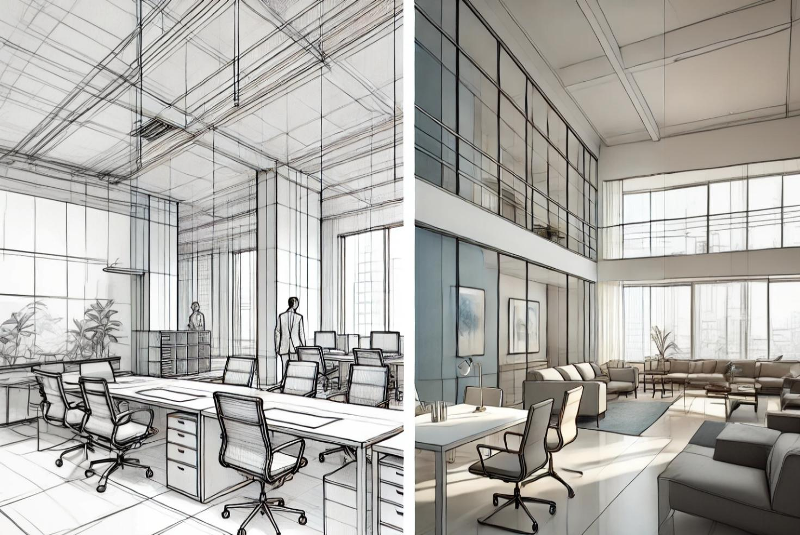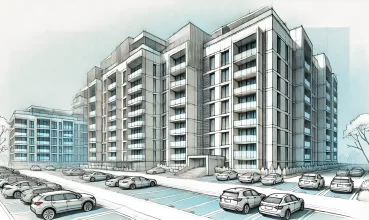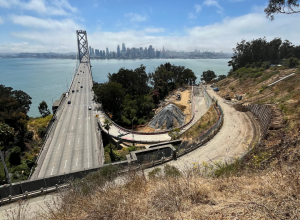Yerba Buena Island Road Improvement Project Yerba Buena Wall Demolition Yerba Buena Soil Grading Thompson Builders is excited to announce the commencement of the Yerba Buena Island Road Impr...
Office-to-Everything: The Creative Transformation of America's Empty Workplaces




In a remarkable shift that underscores the evolving nature of urban real estate, office-to-apartment conversions have surged by an astounding 484% over the past four years. This unprecedented transformation isn’t just about creating new apartments – it’s spawning an entire ecosystem of creative adaptations that’s reshaping America’s urban landscape.
The Numbers Tell the Story
The national pipeline for office-to-apartment conversions has now reached 70,700 units, reflecting both the scale of the opportunity and the industry’s aggressive response to urban housing shortages. Phoenix, emerging as a key player in this transformation, now ranks No. 11 nationally in office-to-apartment conversions, highlighting how this trend has spread beyond traditional coastal markets.
Beyond Residential: The Rise of Creative Conversions
While residential conversions dominate the headlines, innovative developers are pushing the boundaries of adaptive reuse. In a particularly creative twist, some developers are transforming empty office buildings into indoor farming facilities, addressing both urban food security and the vacant office crisis simultaneously.
“Empty office spaces are being repurposed into indoor farming facilities,” notes one market analyst, highlighting how the post-pandemic shift in work patterns has opened new possibilities for creative property use.
Case Studies in Innovation
Houston’s Co-Housing Experiment
A groundbreaking study by Pew and Gensler is exploring the potential of converting office spaces into co-housing solutions in Houston. This innovative approach could provide a new model for addressing both housing affordability and community building in urban centers.
New York’s Landmark Transformation
CetraRuddy’s completion of the largest office-to-residential conversion project in New York City at 25 Water Street stands as a testament to what’s possible in this space. The project has become a blueprint for other developers tackling similar conversions in major urban markets.
Market Forces Driving Change
Several key factors are accelerating this trend:
- Persistently high office vacancy rates in many markets
- Growing housing shortages in urban areas
- Changing work patterns post-pandemic
- The need for sustainable urban development solutions
- Rising demand for affordable housing options
The Economics of Conversion
“Obsolete workplace inventory being adapted into housing” has become more than just a trend – it’s now a crucial strategy for real estate investors looking to salvage value from underperforming office assets. This adaptation isn’t just about survival; it’s about creating new value in urban cores that have struggled with vacancy.
Challenges and Considerations
While the opportunity is significant, developers face several challenges:
- Complex zoning and regulatory requirements
- Technical challenges of building system conversions
- The need to maintain building character while adding residential amenities
- Market uncertainty about long-term demand
- Construction costs and financing challenges
Regulatory Hurdles and How Developers Are Overcoming Them
Zoning and Land Use Restrictions
Many office buildings were originally zoned for commercial use, and converting them to residential or mixed-use spaces requires zoning changes or special permits. In cities like Washington, D.C., and San Francisco developers have faced lengthy approval processes.
Solution: Some cities, like Chicago, have introduced streamlined rezoning programs to fast-track approvals for office-to-residential projects, reducing the typical timeline from years to months.
Building Code Challenges
Offices and residential buildings have different safety, ventilation, and plumbing requirements. Developers in New York have encountered difficulties meeting light and air access codes, as older office buildings often have deep floor plates.
Solution: New York introduced the “Zoning for Housing Opportunity” initiative, allowing variances for buildings that don’t meet traditional residential layout standards. Developers like CetraRuddy have also used interior courtyards and light wells to improve natural lighting.
Historic Preservation Restrictions
Many older office buildings qualify as historic structures, meaning they must adhere to strict preservation guidelines. This has been a challenge in cities like Boston and Philadelphia, where historic districts impose limits on external modifications.
Solution: Developers have leveraged tax credits and grants from programs like the Federal Historic Tax Credit (HTC) to offset costs while preserving architectural integrity.
Financing and Incentive Gaps
Traditional financing models for office buildings don’t always align with residential conversion projects, making funding difficult. In Los Angeles, developers have struggled to secure loans for adaptive reuse projects.
Solution: Some cities, like Denver and Atlanta, have introduced low-interest financing and tax abatements to encourage conversions, making them more financially viable.
Project Timelines: From Inception to Completion
The timeline for office-to-residential conversions varies significantly based on building size, condition, regulatory environment, and financing structures. Understanding these timelines is crucial for developers and investors evaluating potential conversion opportunities.
Typical timelines for major conversion projects include:
- Initial Feasibility Study & Planning (6-12 months): Developers conduct market analysis, feasibility studies, and secure preliminary approvals.
- Zoning and Regulatory Approvals (12-24 months): This phase includes rezoning applications, building code adjustments, and obtaining necessary permits.
- Construction & Renovation (18-36 months): The length of this phase depends on the complexity of converting office infrastructure to residential use.
- Leasing and Occupancy (6-12 months): Once construction is complete, units are marketed and leased, with full occupancy typically taking up to a year.
Fast-Tracking Conversions
Some cities have implemented policies to accelerate these timelines. Washington, D.C.’s Office-to-Affordable Housing Task Force has introduced expedited permitting and tax incentives that can cut approval times in half. Similarly, Chicago’s Adaptive Reuse Ordinance has reduced red tape for developers, helping projects move forward more quickly.
This timeline perspective underscores why early conversions are only now reaching completion, despite the office vacancy crisis beginning in 2020. It also highlights the importance of policy innovations that can compress these schedules to address urgent housing needs more rapidly.
Looking Ahead
The transformation of America’s office spaces represents more than just a response to market conditions – it’s a fundamental reimagining of urban space use. As cities continue to evolve, these conversions are playing a crucial role in addressing housing shortages while breathing new life into struggling business districts.
Regional Success Stories
Markets across the country are seeing successful conversions, each with their own unique approach:
- Los Angeles is exploring conversions to address urban housing challenges
- Phoenix has emerged as a leader in creative adaptive reuse
- Houston is pioneering new models of community-focused development
- New York continues to set precedents with large-scale conversions
The Future of Urban Development
This wave of conversions signals a broader shift in how we think about urban development. The rigid separation of residential and commercial spaces is giving way to more flexible, adaptive approaches that respond to changing social and economic needs.
Conclusion
As the office conversion trend continues to gain momentum, it’s clear that this is more than just a temporary response to market conditions. It represents a fundamental shift in how we think about and use urban space, potentially setting the stage for more sustainable, adaptable cities in the future.
The success of these early conversions suggests that we’re just at the beginning of this transformation. As more developers gain experience with these projects and cities adapt their regulations to facilitate such changes, we’re likely to see even more creative approaches to repurposing America’s vast inventory of office space.
This analysis is based on market data and development news from Q1 2025, including reports on conversion trends, specific project announcements, and market analyses from major urban centers across the United States.
Similar Articles
Explore similar articles from Our Team of Experts.


HARLEYVILLE, S.C., June 17, 2024 /PRNewswire/ — Giant Cement Holding, Inc. (GCHI) is pleased to announce the appointment of Mr. Michael Greto as Vice President of Supply Chain. Mr. Gr...


LOVELAND, Colo., June 18, 2024 /PRNewswire/ — SAFEbuilt, a leading provider of community development services, announced today the recipients of the 2024 Community Development Leadersh...


“Multifamily developments need parking to satisfy their rental tenants and condominium owners needs and expectations of being able to park and store their vehicles where they live,R...


Add automated features to your home Managed Renovations, a leader in home remodeling, today underscores the dual benefits of kitchen renovations that blend practicality with financial gains....




